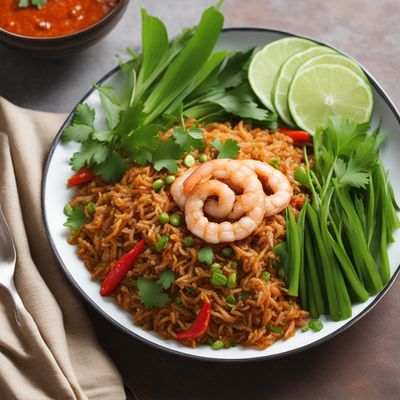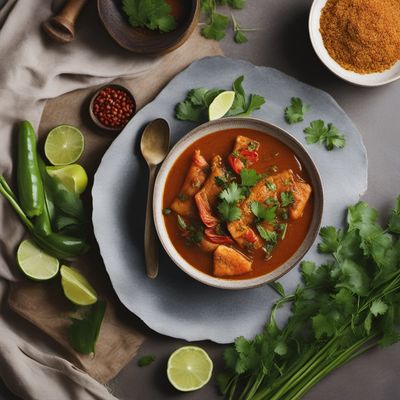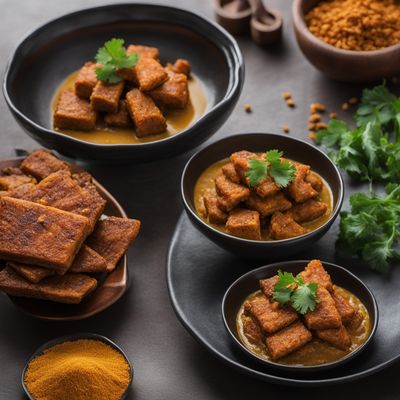
Recipe
Japanese-style Nasi Goreng
Sakura Fried Rice: A Fusion of Indonesian and Japanese Flavors
4.8 out of 5
In the context of Japanese cuisine, this recipe brings a delightful twist to the traditional Indonesian dish, Nasi Goreng. Combining the umami-rich flavors of soy sauce, miso, and fresh seafood, this Japanese-style Nasi Goreng is a harmonious blend of two culinary worlds.
Metadata
Preparation time
15 minutes
Cooking time
10 minutes
Total time
25 minutes
Yields
4 servings
Preparation difficulty
Easy
Suitable for
Pescatarian, Dairy-free, Nut-free, Shellfish-free, Gluten-free (if using gluten-free soy sauce and miso paste)
Allergens
Seafood, Soy
Not suitable for
Vegan, Vegetarian, Paleo, Keto, Low-carb
Ingredients
While the original Indonesian Nasi Goreng typically includes ingredients like shrimp paste and kecap manis, this Japanese adaptation incorporates Japanese seasonings such as soy sauce, miso, and fresh seafood. The flavors are adjusted to suit the Japanese palate, resulting in a unique fusion dish. We alse have the original recipe for Nasi goreng, so you can check it out.
-
2 cups (400g) cooked Japanese short-grain rice 2 cups (400g) cooked Japanese short-grain rice
-
200g mixed seafood (shrimp, squid, and scallops) 200g mixed seafood (shrimp, squid, and scallops)
-
2 tablespoons vegetable oil 2 tablespoons vegetable oil
-
2 cloves garlic, minced 2 cloves garlic, minced
-
1 small onion, finely chopped 1 small onion, finely chopped
-
1 carrot, diced 1 carrot, diced
-
1 cup (150g) frozen peas 1 cup (150g) frozen peas
-
2 tablespoons soy sauce 2 tablespoons soy sauce
-
1 tablespoon miso paste 1 tablespoon miso paste
-
1 teaspoon sesame oil 1 teaspoon sesame oil
-
2 green onions, thinly sliced 2 green onions, thinly sliced
-
2 eggs, beaten 2 eggs, beaten
-
Salt and pepper to taste Salt and pepper to taste
Nutrition
- Calories (kcal / KJ): 380 kcal / 1590 KJ
- Fat (total, saturated): 10g, 2g
- Carbohydrates (total, sugars): 55g, 5g
- Protein: 18g
- Fiber: 5g
- Salt: 2g
Preparation
-
1.Heat 1 tablespoon of vegetable oil in a large skillet or wok over medium heat.
-
2.Add minced garlic and chopped onion, and sauté until fragrant and golden.
-
3.Increase the heat to high and add the mixed seafood. Stir-fry for 2-3 minutes until cooked through. Remove from the skillet and set aside.
-
4.In the same skillet, add another tablespoon of vegetable oil. Add diced carrot and frozen peas, and stir-fry for 2-3 minutes until the vegetables are tender.
-
5.Push the vegetables to one side of the skillet and pour the beaten eggs into the empty space. Scramble the eggs until cooked, then mix them with the vegetables.
-
6.Add the cooked rice to the skillet and break up any clumps with a spatula. Stir-fry for 2-3 minutes to heat the rice evenly.
-
7.In a small bowl, mix together soy sauce, miso paste, and sesame oil. Pour the sauce over the rice and stir-fry for another 2 minutes until well combined.
-
8.Add the cooked seafood back to the skillet and stir-fry for an additional minute to heat through.
-
9.Season with salt and pepper to taste. Garnish with sliced green onions.
-
10.Serve the Japanese-style Nasi Goreng hot and enjoy!
Treat your ingredients with care...
- Seafood — Ensure the seafood is fresh and properly cooked to avoid any foodborne illnesses.
- Japanese short-grain rice — Use cooked rice that has been cooled and refrigerated for a few hours or overnight for the best texture in the fried rice.
- Miso paste — Choose a mild white or yellow miso paste for a balanced flavor in the dish.
- Soy sauce — Opt for low-sodium soy sauce if you prefer to control the saltiness of the dish.
- Sesame oil — Use toasted sesame oil for a rich nutty flavor.
Tips & Tricks
- For added flavor, you can marinate the seafood in a mixture of soy sauce, ginger, and garlic before stir-frying.
- To make it more authentic, serve the Japanese-style Nasi Goreng with a side of pickled ginger and a sprinkle of furikake (Japanese rice seasoning).
- Feel free to customize the dish by adding other vegetables like bell peppers or mushrooms.
- If you prefer a spicier kick, add a dash of Japanese chili powder or shichimi togarashi.
- Leftover rice works best for fried rice as it is drier and less sticky.
Serving advice
Serve the Japanese-style Nasi Goreng hot as a main course. It can be enjoyed on its own or accompanied by a side dish or salad.
Presentation advice
Garnish the dish with a sprinkle of sliced green onions for a pop of color. Serve it in a traditional Japanese bowl or plate for an authentic touch.
More recipes...
For Nasi goreng » Browse all
For Indonesian cuisine » Browse all
More Indonesian cuisine dishes » Browse all

Ayam pop
Fried Chicken
Ayam pop is a Malaysian dish that is known for its crispy and flavorful skin. It is a popular dish that is often served with rice.

Rojak bandung
Bandung Rojak
Rojak bandung is a traditional Indonesian salad that is made with a variety of fruits and vegetables. It is a sweet and spicy dish that is perfect...

Konro
Beef ribs soup
Konro is a traditional Indonesian beef dish that is known for its tender meat and rich, spicy sauce.
More Japanese cuisine dishes » Browse all

Teriyaki
Teriyaki is a Japanese cooking technique in which foods are broiled or grilled with a glaze of soy sauce, mirin, and sugar. The word "teriyaki"...

Rakugan
Rakugan is a traditional Japanese sweet that is made with rice flour and sugar. It is a delicate and elegant sweet that is often served with tea.

Sashimi
Sashimi is a Japanese dish made by thinly slicing raw fish and serving it with soy sauce and wasabi. It is a popular dish in Japanese cuisine and...











